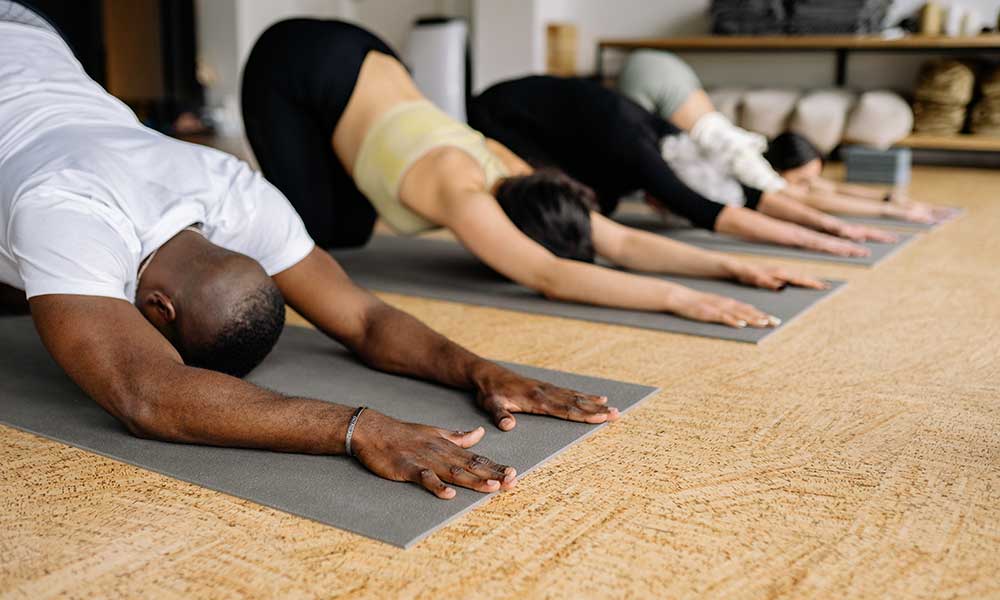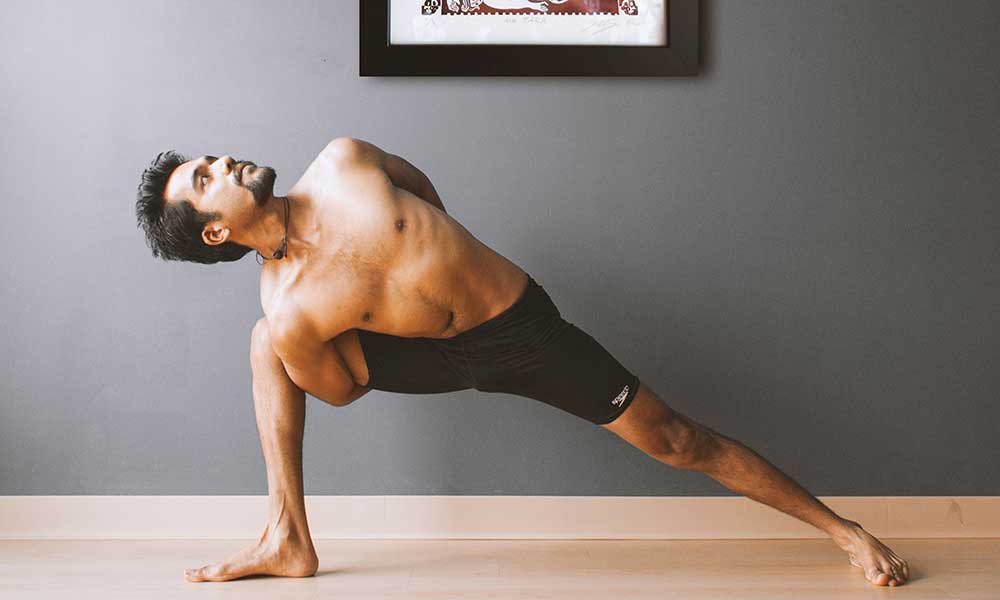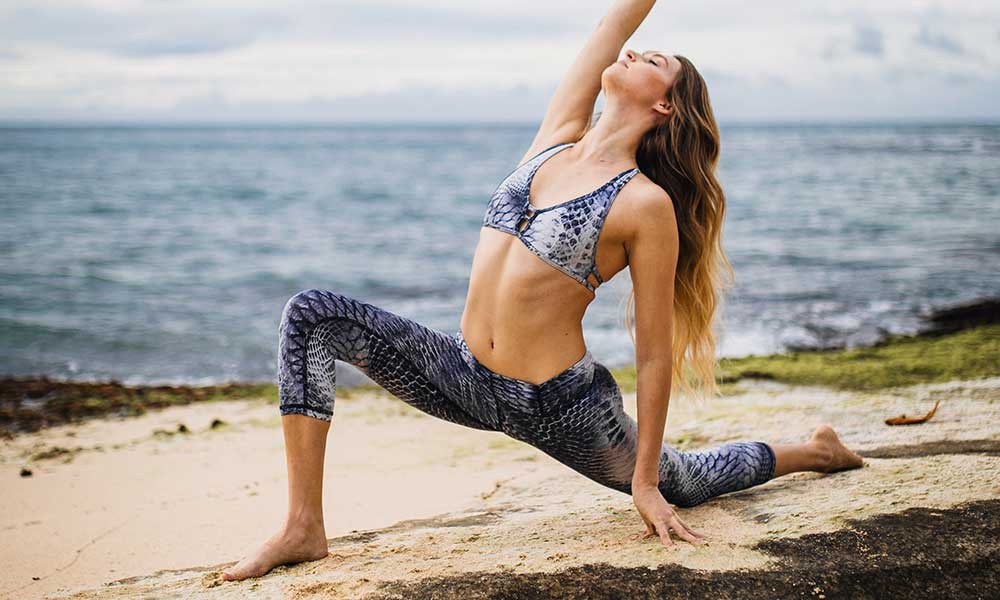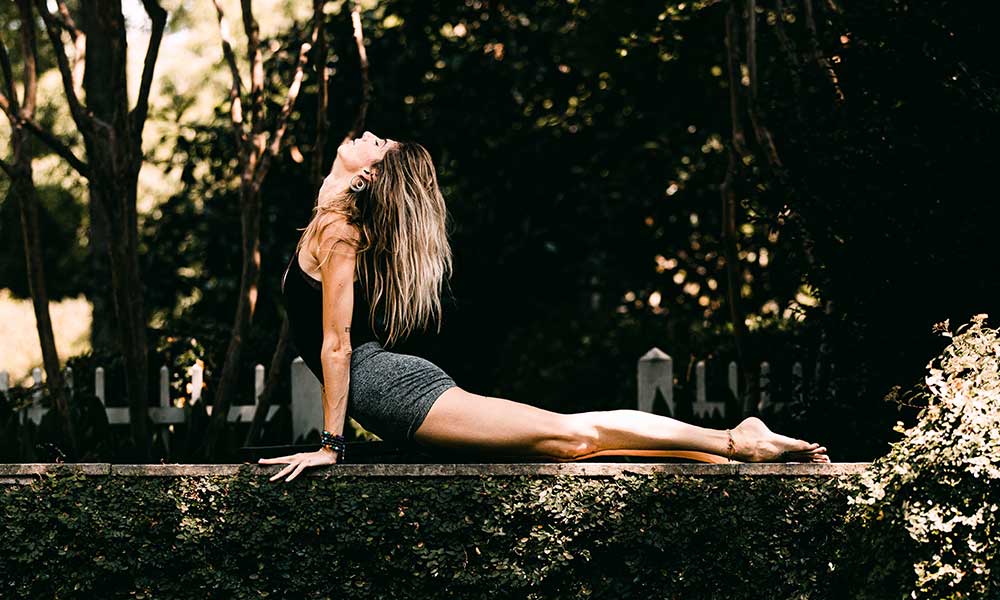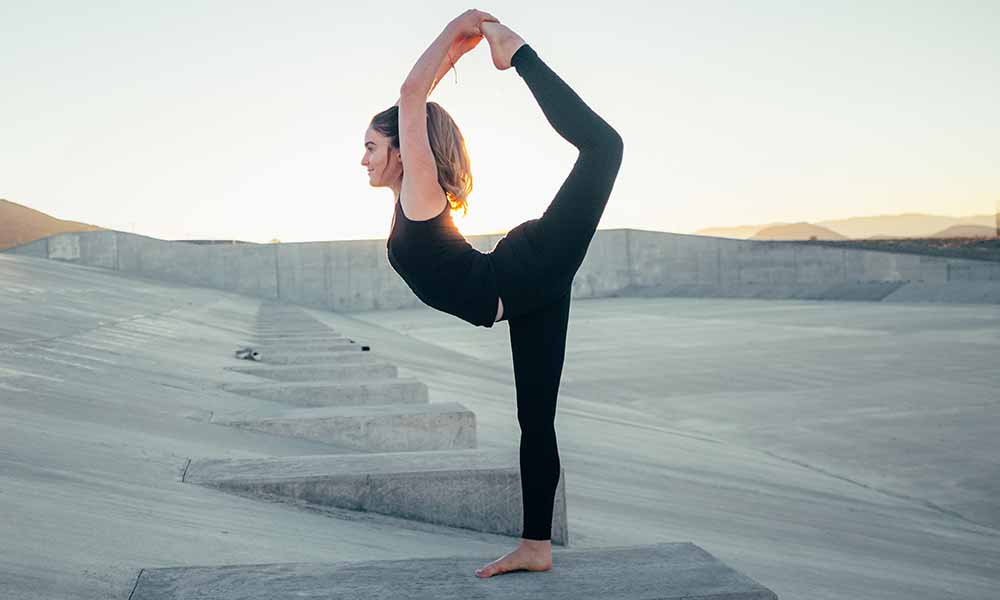We already know that yoga works wonders on the body, helps you stretch out muscles and joints, and leaves you feeling calm.
But what if these sensations could be intensified with heat?
Hot yoga is pretty much exactly what it sounds like: yoga in a hot room.
Practicing yoga in a heated room can warm up our muscles and allow us to relax more into the stretches.
There is a common misconception that all hot yoga is Bikram yoga, a yoga style created by an Indian yogi named Bikram Choudhury, however this is not the case.
Keep reading to learn more about the benefits of hot yoga and how it differs from Bikram yoga.
What To Expect From A Hot Yoga Class
Hot yoga is a yoga class in which the room has been heated above normal room temperature.
It’s up to the yoga teacher to decide how hot it gets, but it’s usually anywhere between 80 to 100 degrees F.
Hot yoga classes can consist of various poses, and often includes music.
Some hot yoga sessions are more of an intense workout, while others might be a little slower paced.
Many people believe that Bikram yoga and hot yoga are the same, but they are not.
Bikram yoga sessions are always done in a 105 degree F room with 40 percent humidity.
It includes a total of 26 poses and two breathing exercises that are done in the same order, every time.
A Bikram yoga class is usually about 90 minutes long.
Health Benefits Of Hot Yoga Classes
Practicing yoga in a hot room can add a layer of challenge to your yoga experience, but there are also some benefits to be gained.
Here are some of the benefits of a sweaty hot yoga session:
- Improves flexibility: Stretching warm muscles is a lot safer than stretching cold muscles. The element of heat allows you to sink deeper into your yoga poses than you might have if you would have been in a colder temperature.
- Burns more calories than traditional yoga.
- Builds bone density.
- Stress reduction: There is something about stretching in a hot room that can really help melt all your fears away.
- Reduces symptoms of depression.
- Pumps up your heart rate: A hot yoga class will lift your heart rate higher than a normal yoga class as it provides your body with more of a challenge. This will also boost your respiration and metabolism.
- Lowes blood glucose levels.
- It’s good for your skin: Sweating in a heated room can improve circulation, bringing healthier blood to your skin cells. This helps to nourish your skin from the inside.
Safety Tips
If you are generally healthy, hot yoga is pretty safe and popular within the yoga community.
That being said, it’s important to be aware of the following precautions if you are planning on practicing for your first time:
- Hydrate: It is extremely important that you drink plenty of water before, during and after a hot yoga class, as you will be sweating a lot. Many hot yoga teachers recommend drinking a low calorie sports drink to replenish any electrolytes you might lose during your workout.
- Do you have any pre-existing health conditions? If so, you might want to skip hot yoga and think twice. Certain health conditions such as heart disease, diabetes, arterial abnormalities, anorexia nervosa, and a history of fainting make you at a higher risk of passing out during a hot yoga class.
- Those with low blood pressure or low blood sugar might be at a higher risk of feeling dizzy or lightheaded during hot yoga.
- Pregnant women should ask their doctor before doing hot yoga.
- If you have ever had issues with tolerating heat, you might be vulnerable to getting heat exhaustion during hot yoga.
- Don’t be afraid to stop immediately if you begin to feel lightheaded, dizzy, or sick. Exit the room and find a place with cool air to sit and relax.
Frequently Asked Questions (FAQ)
Here are some of the most common questions people have about hot yoga.
What is the difference between Bikram and hot yoga?
Bikram Yoga is an intense style of yoga that is always done in 105 degrees F with 40 percent humidity, created by Indian yogi Bikram Choudhury.
Hot yoga is a less serious style of yoga done in any temperature that is hotter than room temperature, usually between 80-100 degrees.
Your yoga instructor will choose the temperature.
Why am I so exhausted after hot yoga?
The heat adds a more challenging element to yoga and makes for a more intense workout.
During hot yoga, you are also sweating considerably more than you would in a regular yoga class, which can make you feel more exhausted.
What is the point of hot yoga?
Hot yoga allows your muscles to be warmer, allowing you to stretch deeper into every pose.
Why hot yoga is bad for you?
Hot yoga may be bad for you if you have any health conditions such as heart disease, diabetes, arterial abnormalities, anorexia nervosa, and a history of fainting
Can beginners do hot yoga?
Because the heated environment makes for a more challenging class, you might want to try a few regular yoga classes first if you are a beginner.
But if you are feeling up to the challenge, just make sure to take the necessary safety precautions like drinking plenty of water and stopping immediately if you begin to feel sick.
Can I lose weight from hot yoga?
Yes!
Any workout can help you with weight loss, but practicing yoga in a heated room can increase the number of calories you burn!
Does hot yoga age your skin?
No.
All physical exercises have anti-aging benefits, but the hot and sweatiness of hot yoga can improve blood circulation allowing for oxygen and nutrient rich blood to flow to the skin, potentially nourishing it from the inside.

